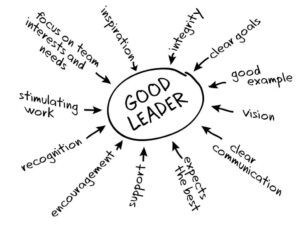
5 Steps to Improve Leadership Communication in Your Company
In our constantly changing business environment, one thing remains the same — employees want to hear from their organization’s leaders. People naturally look to decision-makers

In our constantly changing business environment, one thing remains the same — employees want to hear from their organization’s leaders. People naturally look to decision-makers

I want you to look around at your employees — in person where possible, and on that Zoom call. Then, I want you to think

These continue to be uncertain times, creating unfamiliar territory. In such conditions, it’s even more important for the company, leaders and managers, and individual employees,

Leadership has its own battles with productivity, as longtime TalentCulture friend and leadership expert Gregg Lederman says. He recently dove into why some leaders struggle

William Shakespeare wrote, “Some are born great, some achieve greatness, and some have greatness thrust upon them.” That’s leadership in a nutshell. But it’s also

“Man often becomes what he believes himself to be. If I keep on saying to myself that I cannot do a certain thing, it is

I am amused when all I hear leaders talk about is their successes. The triumphs they achieved paint a blueprint of what it takes to
I have been on the biggest adventure of my life even though I feel like our lives are a series of adventures, where we have
There’s a saying in business: “If you want to get something done, give it to a busy person.” But is that fair to the busy
The key to collaboration is communication: we need to be able to talk to each other to get stuff done. And it’s a compelling facet
Spring is in the air, the days are getting longer and the crocuses are poking up their hopeful heads. Yet, these remain bleak times for
Leaders have the social sway to directly and indirectly affect the policies, procedures, and laws of businesses, industries, and regions. The pursuit of leadership opportunities
It’s time leaders got smart about hiring. We have to make sure they do. I know for certain that—as you read this—a lot of creative
If you’re under 50, there probably hasn’t been, in your memory, a time of such paralyzing uncertainty. Sure, each decade since the 60s has seen
Is any relationship ever completely reciprocal? Not really, because one party always wields more power over the other. This is a human behavior dynamic that
Have you ever wondered how stand-out leaders create, not just successful futures for their organizations, but breakthrough and amazing futures? Here’s how. Stand-out leaders don’t
Emotional intelligence is an essential trait for effective managers. Emotionally intelligent people motivate and understand the value in connecting with others.Getting to know people is

Every company needs people who can lead and people who can manage. They don’t have to be the same. They are likely not the same.

“You got up, and you did something. And if trying to find a way when you don’t even know you can get there isn’t a

Successful leaders understand the power of human nature. What do they know about behavior that others can learn?

What can long-distance running teach us about entrepreneurship? Here are 6 ideas from a street-smart young leader

What sets great leaders apart from the rest? What role does emotional intelligence play — and can those skills be learned? The #TChat crowd weighs in

Listening — it can be a powerful tool for business leaders. But developing the habit of mindful listening requires practice. Here are tips to help.